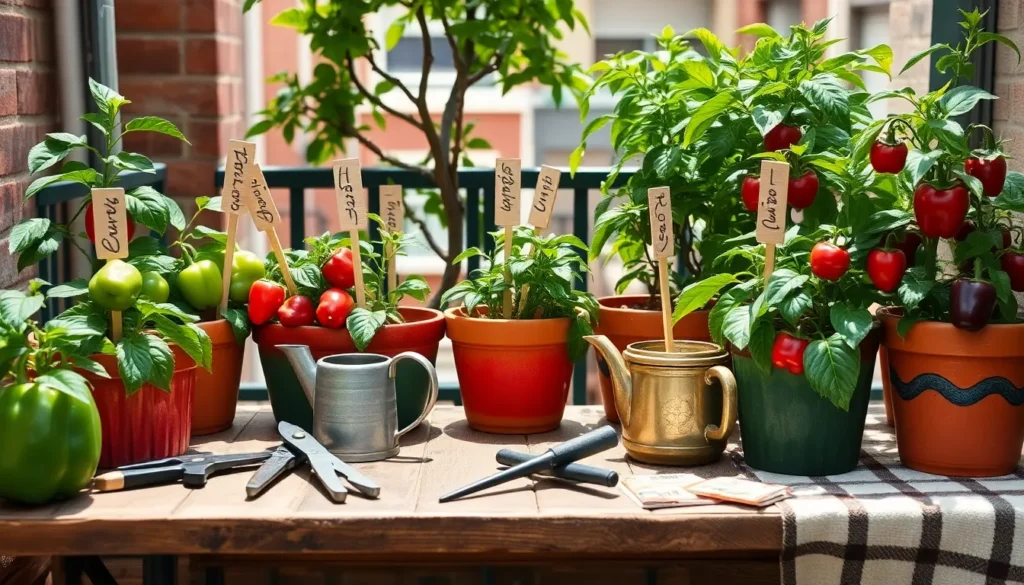Imagine biting into a freshly picked pepper, its vibrant flavor and crisp texture a testament to your gardening prowess. For both novice and seasoned gardeners, the joy of growing your own peppers need not be confined to expansive plots of land; with a little ingenuity, even the smallest spaces can yield a bountiful harvest. Whether you’re working with a tiny balcony or a cozy kitchen windowsill, cultivating peppers in compact areas is an enriching experience that brings the delight of homegrown produce right to your fingertips.
Understanding the nuances of growing peppers in limited spaces is crucial for maximizing both yield and satisfaction. This guide will walk you through selecting the right varieties, optimizing your containers, and nurturing your plants to thrive despite spatial constraints. You’ll discover tips on soil selection, watering techniques, and how to harness the power of sunlight to ensure your peppers flourish. By the end, you’ll be equipped with the knowledge and confidence to transform any small nook into a vibrant pepper paradise.
Select Compact Pepper Varieties
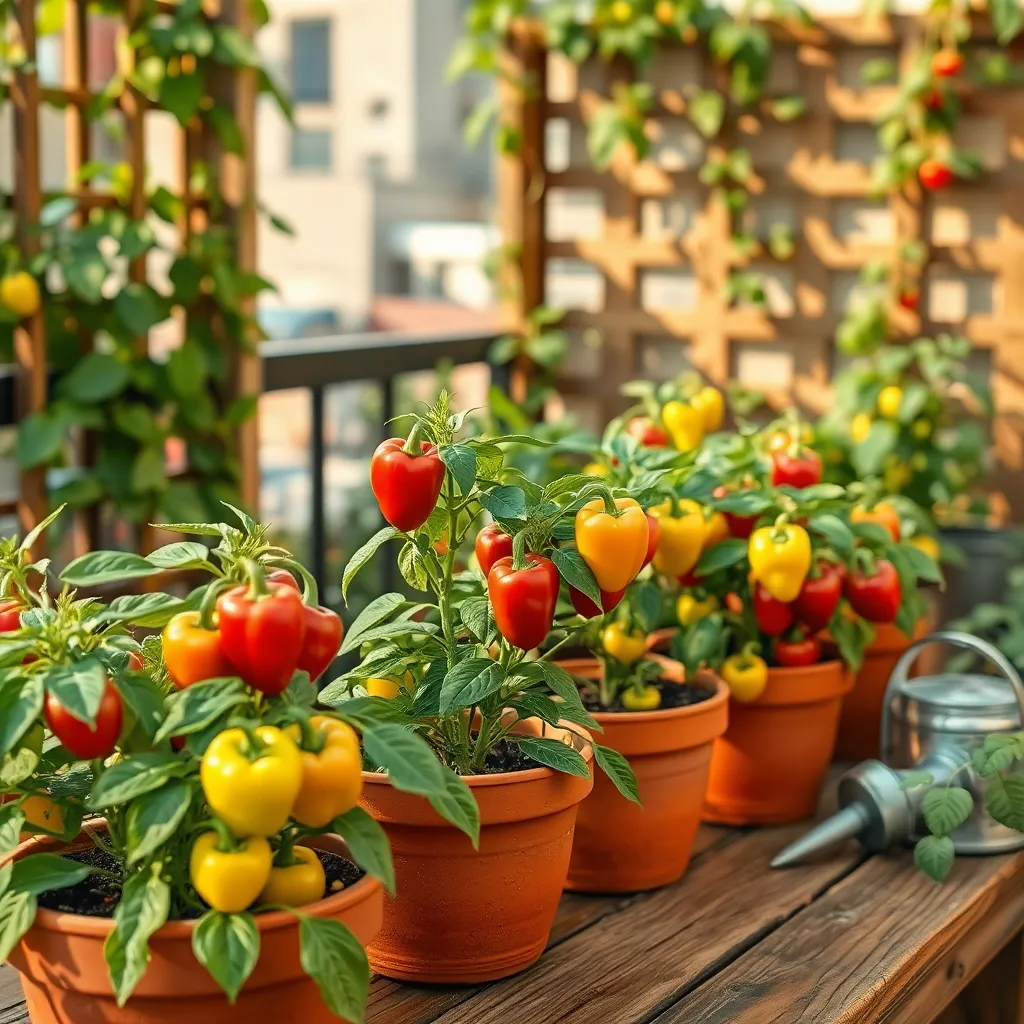
In small spaces, selecting the right pepper varieties is crucial for successful gardening. Compact pepper varieties are ideal, as they thrive in limited areas while still producing abundant fruit.
Consider varieties like ‘Mini Bell’ or ‘Jalapeño M’, which are specifically bred for smaller spaces. These types remain under two feet tall, making them perfect for container gardening on patios or balconies.
Soil quality is essential for growing healthy peppers, so use a well-draining potting mix enriched with organic matter. Regularly feeding your plants with a balanced, water-soluble fertilizer can further enhance growth and fruit production.
Peppers need at least six to eight hours of sunlight daily to thrive, so choose a sunny spot for your containers. If you’re growing indoors, supplement with grow lights to ensure they receive the necessary light exposure.
Maintain consistent watering, ensuring the soil remains moist but not waterlogged. A deep watering once or twice a week is typically sufficient, but adjust based on weather conditions and container size.
For those looking to optimize space, consider vertical gardening techniques. Using a trellis or similar support can help keep your plants upright and healthy, preventing disease and maximizing yield.
Use Space-Efficient Containers
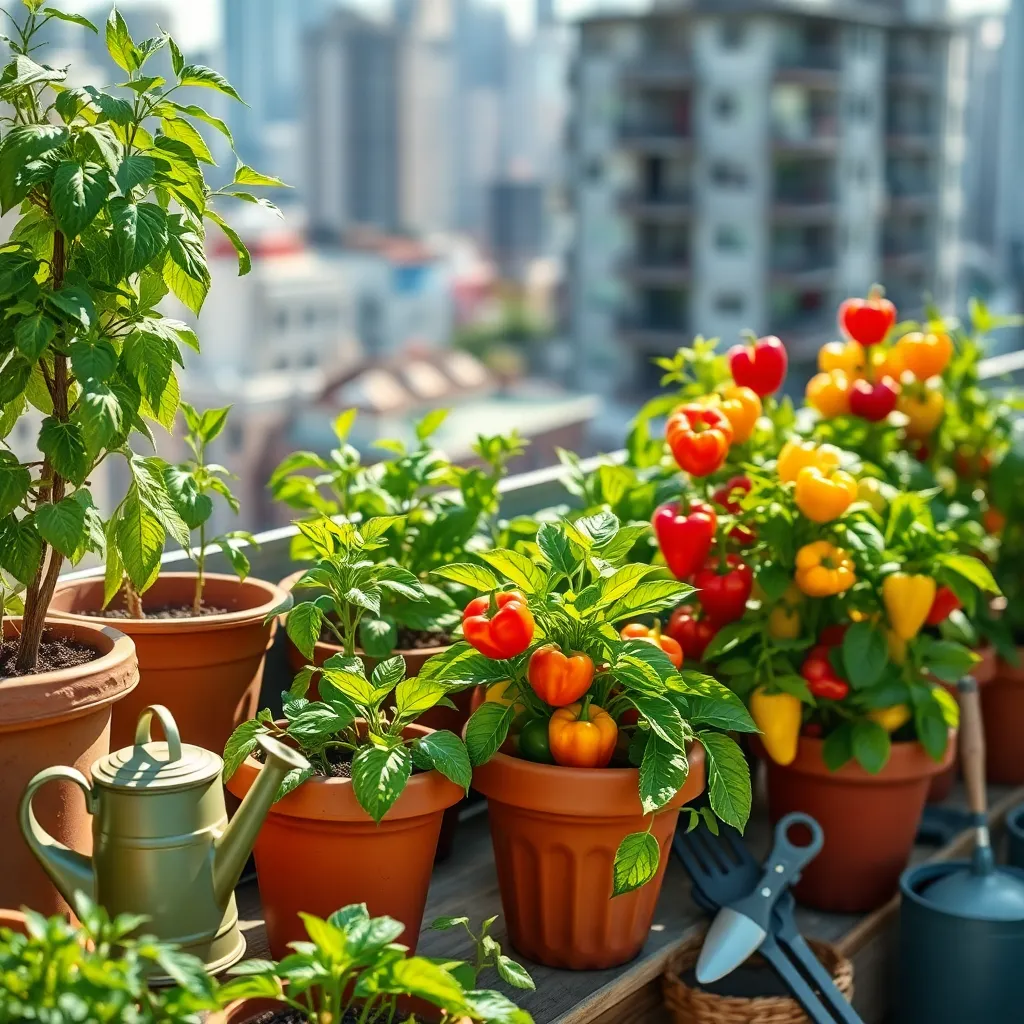
In small spaces, choosing the right containers is crucial for growing peppers successfully. Opt for space-efficient containers such as fabric grow bags or vertical planters, which allow roots to expand while maximizing your available area.
Fabric grow bags are excellent because they provide good aeration and drainage, promoting healthier root systems. They come in a variety of sizes, but for peppers, a 10 to 15-gallon bag is typically sufficient to support growth and fruiting.
Another effective option is to use self-watering containers, which can help manage moisture levels and reduce watering frequency. These containers often come with a reservoir that supplies water to the plant roots as needed, making them ideal for busy gardeners or those who may forget to water regularly.
For those with vertical gardening systems, ensure that the container pockets or slots are deep enough to accommodate pepper root systems. Generally, a depth of 12 inches or more is recommended to allow roots to expand and support healthy foliage and fruit production.
It’s important to use a high-quality potting mix that retains moisture yet drains well, such as one enriched with peat moss and perlite. Adding a slow-release fertilizer to the mix can also provide peppers with the necessary nutrients throughout the growing season, enhancing their growth and yield.
Ensure Optimal Sunlight Exposure
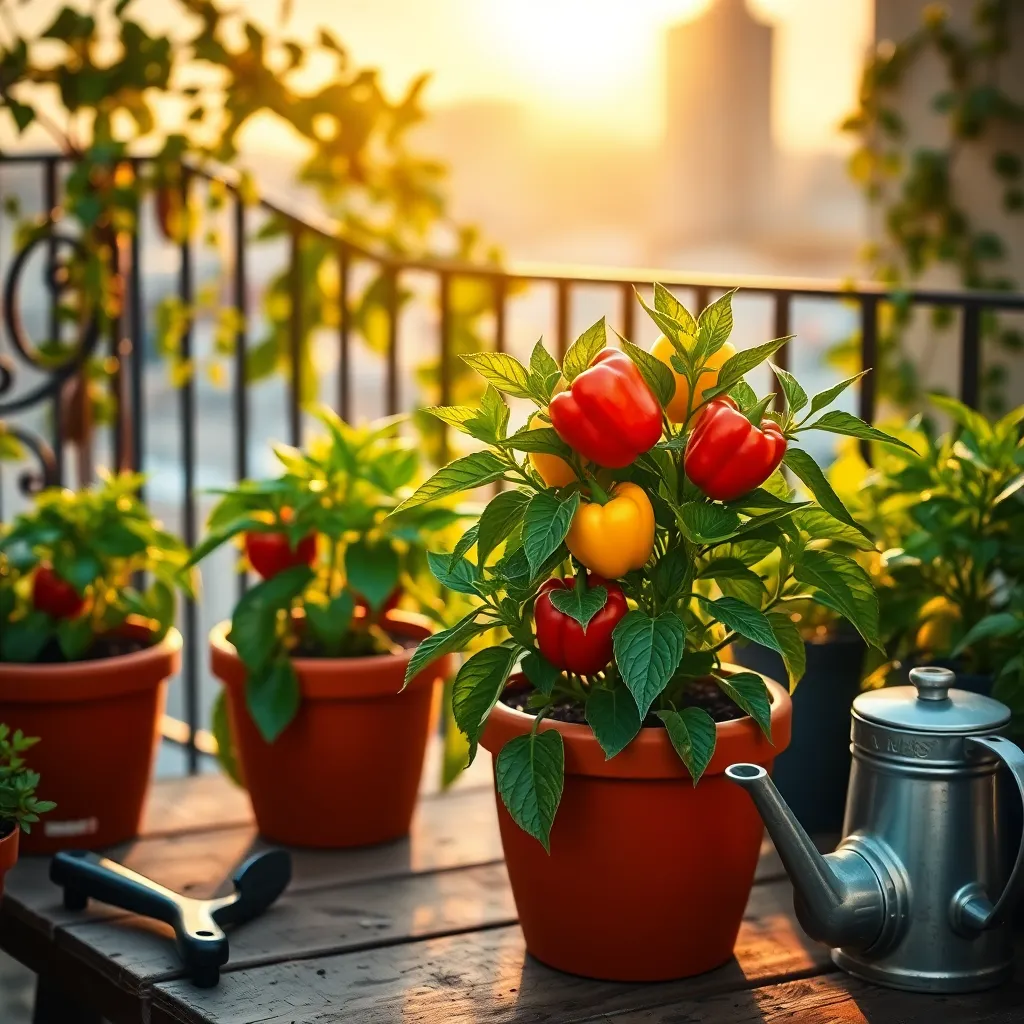
Proper sunlight exposure is crucial for growing healthy peppers, especially in small spaces where light can be limited. Aim to position your pepper plants in a location where they receive at least 6-8 hours of direct sunlight daily to ensure robust growth and fruit production.
Consider using reflective surfaces, such as mirrors or white walls, to amplify the light reaching your plants. This technique can significantly boost light exposure by bouncing sunlight onto your peppers, helping them thrive even in less-than-ideal light conditions.
For those with limited natural light, investing in grow lights can be a game-changer. Choose full-spectrum LED grow lights that mimic sunlight, and position them about 12 inches above your plants to supplement natural light and promote vigorous growth.
Regularly rotate your containers to ensure even light distribution and prevent your plants from leaning towards the light source. This simple practice helps maintain a balanced plant structure and encourages even fruit development on all sides.
Water Consistently and Moderately
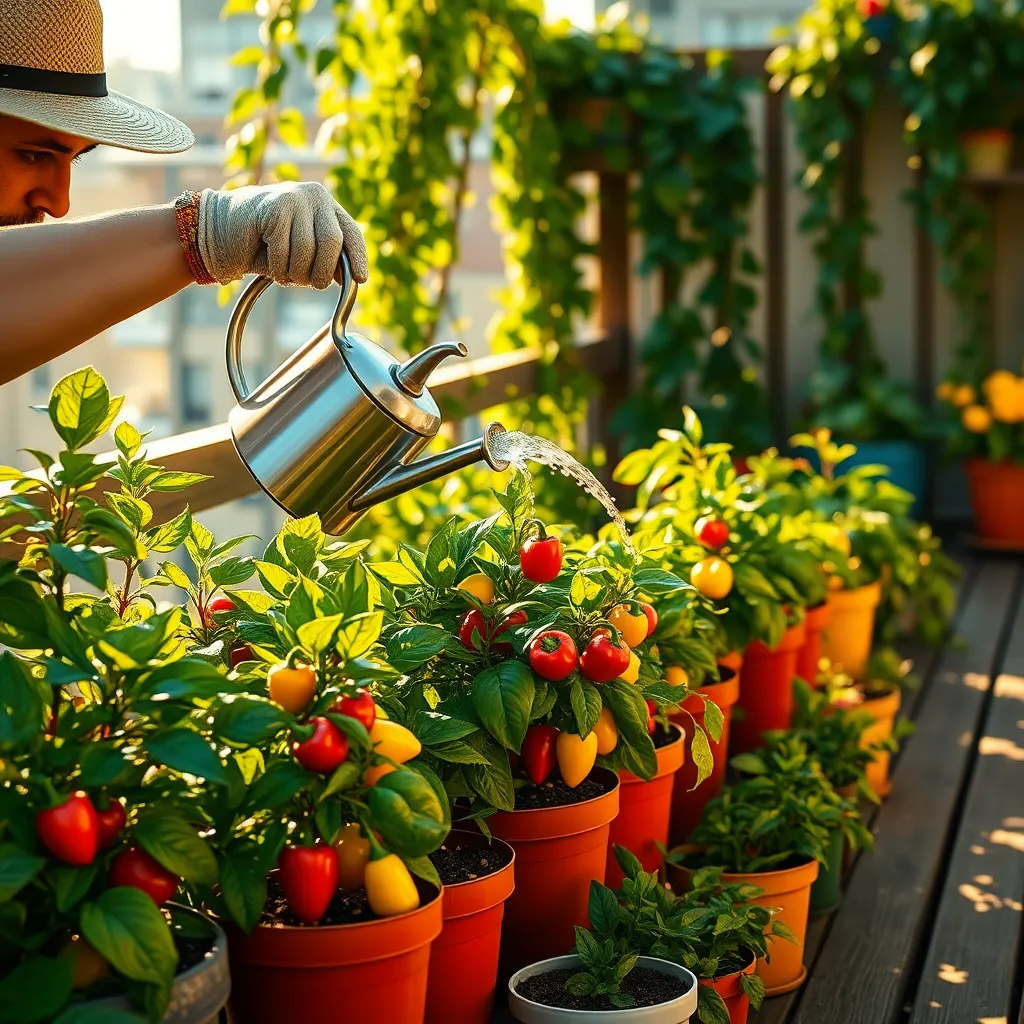
Watering your pepper plants consistently and moderately is essential for their growth and fruit production. Peppers prefer evenly moist soil but dislike being waterlogged, so finding a balance is key.
To achieve this balance, water your pepper plants when the top inch of soil feels dry to the touch. Avoid letting the soil dry out completely or become soggy, as both conditions can stress the plants.
Using a well-draining potting mix enriched with organic matter can help maintain the right moisture levels. Consider adding perlite or vermiculite to your soil to improve drainage and aeration, which will support healthy root development.
For those with more experience, integrating a drip irrigation system can ensure consistent moisture delivery without overwatering. This method helps deliver water directly to the root zone, minimizing evaporation and water waste.
Regularly check the moisture levels, especially during hot or windy conditions, as these can increase the plant’s water needs. Adjust your watering schedule as needed, ensuring your peppers receive sufficient moisture for optimal growth.
Prune to Maximize Airflow
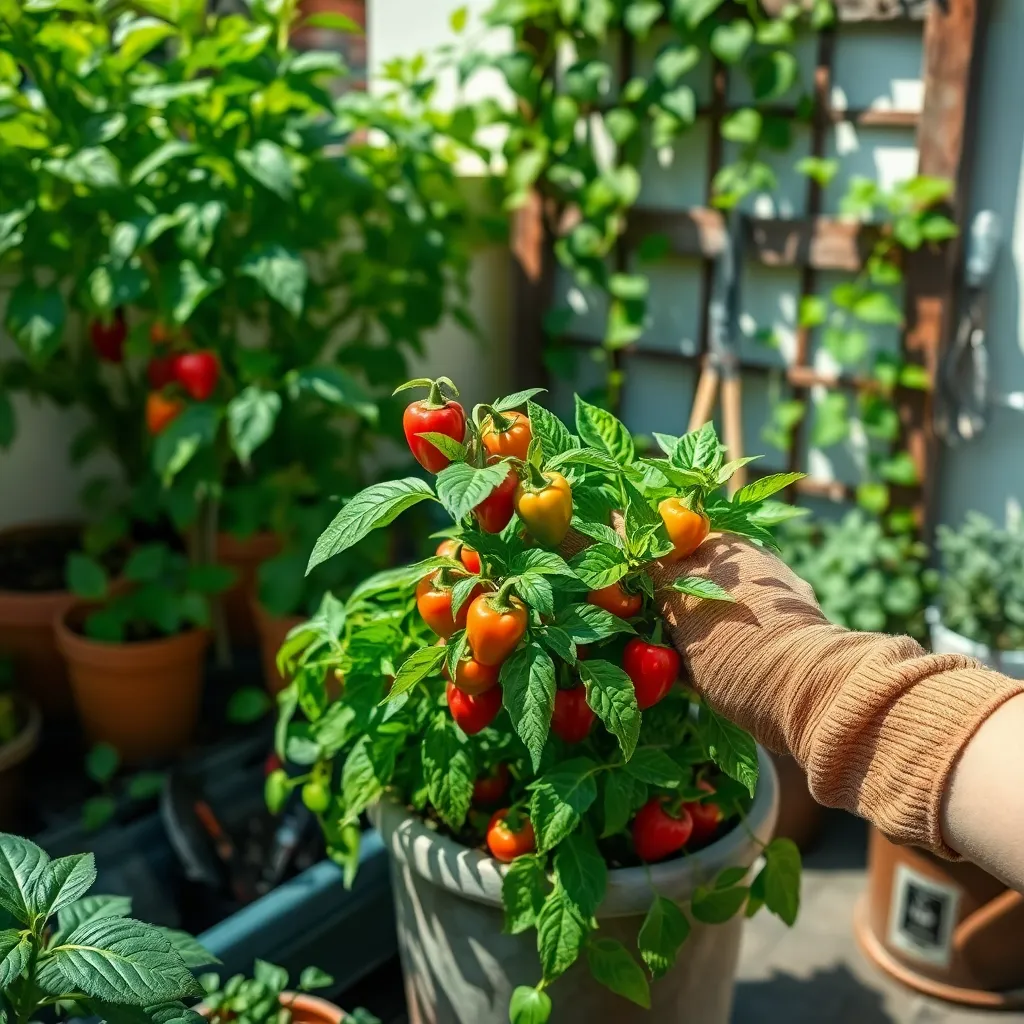
Pruning your pepper plants is essential to maximize airflow, especially in small spaces. Good airflow reduces the risk of fungal diseases and ensures your plants remain healthy and productive.
Begin by identifying any dead, damaged, or crossing branches that can hinder airflow. Use clean, sharp pruning shears to remove these sections, making cuts just above a leaf node to encourage new growth.
To further enhance airflow, thin out some of the inner foliage. This not only increases air circulation but also allows more sunlight to penetrate, promoting robust fruit development.
For more experienced gardeners, consider a technique called “topping,” which involves cutting off the main stem. This practice encourages bushier growth and can boost yield in confined spaces by allowing light to better reach lower branches.
Conclusion: Growing Success with These Plants
In our exploration of cultivating peppers in small spaces, we discovered five key relationship concepts that mirror the nurturing of our connections: commitment to care, adaptability in limited conditions, the importance of consistent communication, patience in growth, and the joy of shared harvests. Just as a pepper plant thrives with attention and adaptability, so too do our relationships flourish when we invest time and understanding into them.
As an actionable next step, consider setting aside a specific time each week to focus on one of these relationship concepts, much like you would tend to your plants. This could mean dedicating a few minutes to communicate openly with a partner or adapting your usual routine to accommodate new growth in the relationship.
Remember, healthy relationships require ongoing nurturing. Bookmark this article as your go-to guide for maintaining and enhancing your personal connections. Your commitment today can lead to a bountiful harvest of love and understanding tomorrow.
As you embark on this journey of growth, know that every small effort contributes to a future of thriving relationships. Embrace the process, and watch your relationships bloom beautifully.

